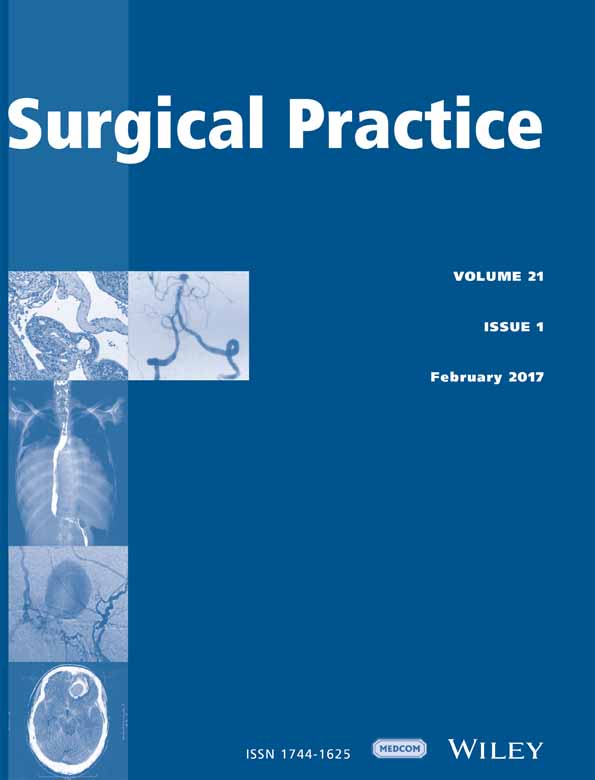Risk factor analysis and predictive score for pneumonia after major/ultra-major operations: A single-centre, retrospective study from the Surgical Outcome Monitoring and Improvement Program database
Abstract
Aim
The aim of the present study was to identify the significant risk factors predicting the occurrence of postoperative pneumonia after major or ultra-major operations (OT), and construct a predictive score to identify high-risk patients for postoperative pneumonia.
Patients and Methods
A total of 6237 patients who underwent major/ultra-major operations in a single institute were recruited to participate in the present study. Data from 1742 patients who underwent major or ultra-major operations from July 2012 to June 2013 were retrieved from the Surgical Outcome Monitoring and Improvement Program database. Thirty-eight variables were analysed by univariable analysis method. Significant factors with a P-value ≤0.05 were further analysed by using the multivariable logistic regression model. A scoring system was then formulated by using these significant risk factors to identify high-risk patients. The efficacy of this scoring system was examined by applying this to another 4495 patients.
Results
Thirty-eight variables were included in this study (7 patients’ demographic variables, 20 preoperative and 11 operative or disease-related variables). Five of 38 variables were found to be significant, including (i) Dependence of activity of daily living; (ii) Ascites; (iii) General anaesthesia; (iv) preoperative Dyspnoea; and (v) American Society of Anaesthesiology (ASA ) score ≥3. They formed the basis of the DAGDA score. The maximum DAGDA score was 18, with an area under the ROC curve score of 0.774 (95 per cent confidence interval: 0.711–0.836). The sensitivity and specificity of the DAGDA score with a cut-off point of 8 were 73.6 and 73.4 per cent, respectively. Validation of the DAGDA score was examined by using another cohort group of 1329 patients (July 2010–June 2011 database), with an area under the ROC curve score of 0.751. Similar results were achieved when the scoring system was applied to the July 2013–June 2014 (1671 patients) and July 2014–June 2015 (1495 patients) database.
Conclusion
Dependence of activity of daily living, ascites, general anaesthesia, preoperative dyspnoea and ASA score ≥3 are significant risk factors associated with postoperative pneumonia after major and ultra-major operations. The DAGDA score can be used to predict patients at high risk of developing postoperative pneumonia.




